Bronze cory - Corydoras aeneus
Scientific name: Corydoras aeneus
Common name: Bronze cory
Family: Callichthyidae
Usual size in fish tanks: 6 - 8 cm (2.36 - 3.15 inch)
014
Recommended pH range: 5.8 - 7.7
Recommended water hardness: 4 - 12°N (71.43 - 214.29ppm)
0°C 32°F30°C 86°F
Recommended temperature range: 22 - 29 °C (71.6 - 84.2°F)
The way how these fish reproduce: Spawning
Where the species comes from: South America
Temperament to its own species: peaceful
Temperament toward other fish species: peaceful
Usual place in the tank: Bottom levels
Food and Feeding
Bronze Corydoras are omnivorous and will readily accept a variety of foods in the aquarium. For their staple diet, offer quality sinking pellets or flakes designed for bottom dwellers. To ensure a well-balanced diet, supplement with live or frozen foods such as bloodworms, brine shrimp, and daphnia. They also appreciate broken-up algae wafers. To keep them in optimal condition, feed small portions two to three times daily. Providing a varied diet will not only enhance their natural coloration but also boost their overall health. Avoid overfeeding, as it can lead to poor water quality and health issues.
Origin
The Bronze Cory (Corydoras aeneus) is native to various freshwater habitats across South America, including rivers, streams, and even some of the islands off the coast. They are often found in slow-moving, shallow waters with soft, sandy substrates and plenty of leaf litter, which provides both food and shelter.
Sexing
Distinguishing between males and females is relatively easy, especially when they reach maturity. When viewed from above, mature females are generally larger, plumper, and rounder in body shape compared to the smaller, slimmer males. This difference becomes particularly noticeable during the breeding season, when the females are filled with eggs.
Breeding
Breeding Bronze Corydoras in the home aquarium is relatively straightforward, provided they are kept in groups of at least 6 or more. This schooling behavior allows them to form natural pairs. To induce spawning, condition the fish with a protein-rich diet, including bloodworms and brine shrimp. Perform frequent water changes to mimic their natural environment and lower the water temperature slightly, which often triggers spawning behavior.
During spawning, the female will clean a chosen surface, such as a broad leaf or the aquarium glass, where she will deposit the eggs. After fertilization, the eggs will adhere to the surface. Typically, the eggs hatch within 4 to 5 days, and the fry will become free-swimming a few days later. Feed the fry with powdered fry foods or specially formulated liquid foods until they are large enough to accept newly hatched brine shrimp. Providing plenty of hiding spots with plants or decor will help the fry feel secure as they grow.
Lifespan
With proper care and a clean, stable environment, the Bronze Cory can live for up to 5 years. Regular water changes and a varied diet are key to ensuring they reach their full lifespan.
Tank Setup and Care
To replicate their natural habitat, use a soft sand or smooth gravel substrate to protect their sensitive barbels. The tank should include plenty of plants and hiding spots using driftwood, rocks, or caves, as these fish appreciate shaded areas. A minimum tank size of 75 liters (20 gallons) is recommended for a small group. Maintain a water temperature between 22-29°C (71.6-84.2°F), with a pH range of 5.8-7.7, and water hardness between 4-12°N (71.43-214.29 ppm). Gentle filtration and regular water changes are essential to maintain the water quality, as Bronze Corydoras are sensitive to poor conditions.
Tankmates
Bronze Corydoras are peaceful bottom dwellers, making them compatible with a variety of other non-aggressive tankmates. Ideal companions include:
- Harlequin Rasbora (Trigonostigma heteromorpha)
- Neon Tetra (Paracheirodon innesi)
- Rummy Nose Tetra (Hemigrammus bleheri)
- Angelfish (Pterophyllum scalare)
They do best in groups of their own species, so it's advisable to keep at least 6 Bronze Corydoras together to observe their natural schooling behavior.
Short Description
The Bronze Cory (Corydoras aeneus) is a peaceful bottom-dweller known for its hardiness and adaptability. Its armor-like scales overlap, providing optimal protection against predators. It also has a locking spine that makes it difficult for predators to swallow and can cause the fish to get stuck in nets when being captured. Special care must be taken when removing them from the tank to avoid injury. Their playful nature and ease of care make them a popular choice for community aquariums.
Pictures
Thanks to halkor who has allowed us to use the pictures. Also, images were bought from jjphoto.dk by aqua-fish.net.






 Aspidoras
Aspidoras  Giant
Giant  Hognosed
Hognosed  Emerald
Emerald  Cascarudo
Cascarudo  Acre
Acre  Adolfo’s
Adolfo’s 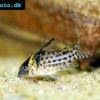 Agassizii’s
Agassizii’s  Spotted
Spotted  Skunk
Skunk  Corydoras
Corydoras 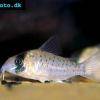 Fairy
Fairy  Corydoras
Corydoras  Pink
Pink 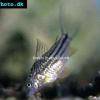 San
San  Bond’s
Bond’s  Spotted
Spotted  Tailspot
Tailspot  Concolor
Concolor  Cope’s
Cope’s 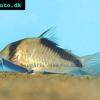 Sand’s
Sand’s  False
False  False
False 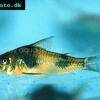 Ehrhardt’s
Ehrhardt’s  Elegant
Elegant 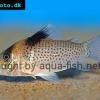 Saddle
Saddle  Fowler’s
Fowler’s  Gomezi
Gomezi 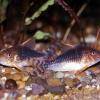 Palespotted
Palespotted 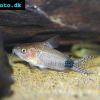 Guapore
Guapore  Dainty
Dainty  Mosaic
Mosaic  Imitator
Imitator  Julii
Julii  Leopard
Leopard 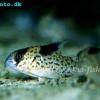 Black
Black  Slant-bar
Slant-bar  Bluespotted
Bluespotted  False
False  Bandit
Bandit  Mini
Mini 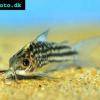 Napo
Napo  Corydoras
Corydoras 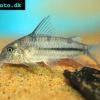 Blue
Blue  Nijssen’s
Nijssen’s 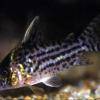 Ornate
Ornate  Peppered
Peppered  Panda
Panda  Albertini
Albertini  Pastaza
Pastaza  Corydoras
Corydoras  Many-spotted
Many-spotted  Pretty
Pretty  Dwarf
Dwarf  Iridescent
Iridescent  Reticulated
Reticulated 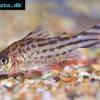 Bannertail
Bannertail  Robust
Robust  Schwartz’s
Schwartz’s  Black
Black 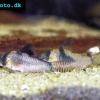 Longnosed
Longnosed  Seuss’
Seuss’  Smudge
Smudge  Masquerade
Masquerade 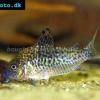 False
False  Millenium
Millenium  Pinkthroat
Pinkthroat  Sterba’s
Sterba’s  Longsnout
Longsnout  False
False  Miguelito
Miguelito 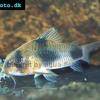 Twosaddle
Twosaddle  Xingu
Xingu 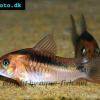 Black
Black  Porthole
Porthole  Flagtail
Flagtail  Brown
Brown  Spotted
Spotted